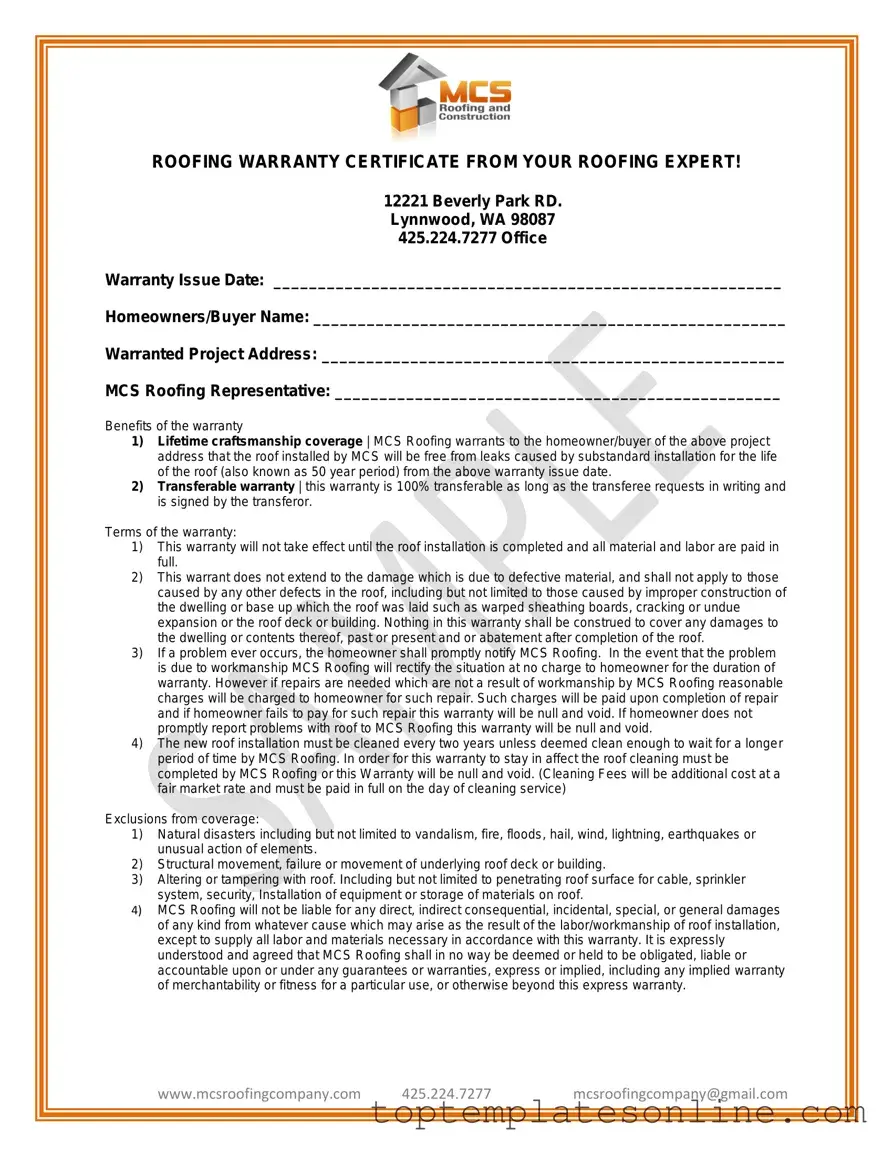The Roofing Warranty Certificate serves as an essential document for homeowners who have recently had a roof installed by MCS Roofing. This certificate outlines the key benefits and terms associated with the warranty, providing peace of mind regarding the quality of workmanship and materials used. Notably, the warranty offers lifetime craftsmanship coverage, ensuring that the roof remains free from leaks caused by substandard installation for a period of up to 50 years from the issue date. Homeowners can also transfer this warranty to a new buyer, provided the transfer request is made in writing and signed by both parties. However, the warranty is contingent upon certain conditions, such as the completion of the roof installation and payment for all materials and labor. It explicitly excludes coverage for damages resulting from natural disasters, structural issues, or unauthorized alterations to the roof. Furthermore, homeowners are required to maintain the roof by having it cleaned every two years, with the cleaning performed by MCS Roofing to keep the warranty valid. Should any issues arise, prompt notification to MCS Roofing is crucial, as delays may void the warranty. This certificate not only protects the investment made in a new roof but also clarifies the responsibilities of both the homeowner and the roofing company.
